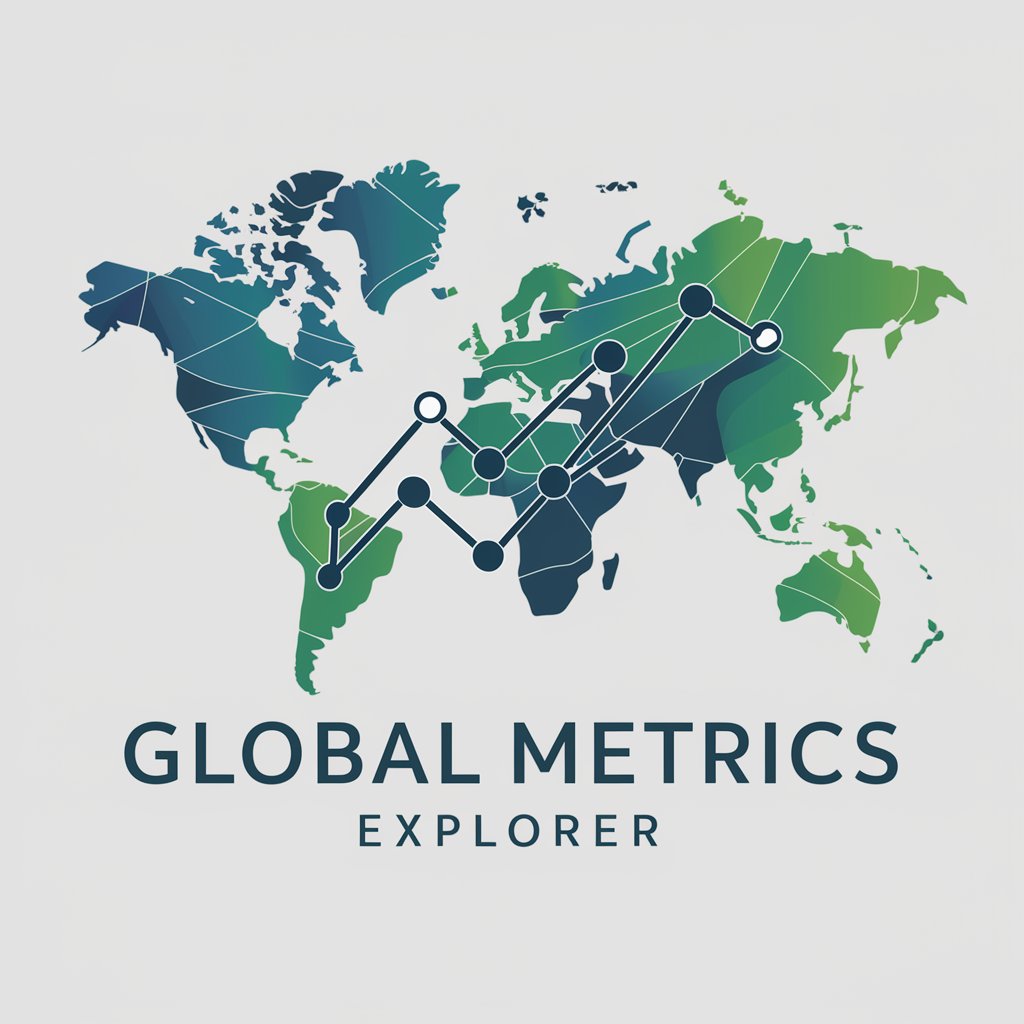
Atmospheric Plastics Researcher - Atmospheric Plastic Analysis

Welcome! Let's explore the world of atmospheric plastics together.
Unveil the cycle of plastics in our atmosphere
Describe the process by which microplastics enter the atmosphere.
Explain the environmental impact of nanoplastics on climate change.
Summarize the current research on the infrared spectra of atmospheric plastics.
Discuss the methods used to detect microplastics in the atmosphere.
Get Embed Code
Introduction to Atmospheric Plastics Researcher
Atmospheric Plastics Researcher is designed as a specialized AI model focused on the research of plastics, specifically microplastics and nanoplastics, in the atmosphere. Its creation stems from the growing concern over plastic pollution and its environmental impact, particularly in the air we breathe. The purpose of this GPT model is to dissect the cycle of plastics entering, existing within, and exiting the atmospheric realm. This includes examining how plastics are introduced into the atmosphere, the duration they linger, the processes influencing their atmospheric journey, and their eventual fate, whether through deposition, breakdown, or removal by other means. An integral part of the research involves understanding the breakdown and decay of these plastics over time, including their interaction with UV radiation, temperature variations, and biological agents. Additionally, the model delves into the study of the infrared spectra of plastic particles throughout their atmospheric journey, offering insights into their physical and chemical changes. Scenarios illustrating these functions could involve analyzing data from studies on plastic deposition in remote areas, investigating the breakdown rates of different types of plastics under various atmospheric conditions, or modeling the transport mechanisms that distribute plastics globally. Powered by ChatGPT-4o。

Main Functions of Atmospheric Plastics Researcher
Data Analysis and Interpretation
Example
Interpreting data from studies such as 'Plastic rain in protected areas of the United States' to assess the deposition rates and sources of atmospheric plastics.
Scenario
Researchers or environmental scientists using the model to understand the impact of plastic deposition on natural reserves, analyzing data to identify primary sources of plastic pollution and its implications for conservation efforts.
Educational Resource
Example
Explaining the breakdown mechanisms and factors influencing nanoplastic formation from common plastics found in the environment, as outlined in studies on plastic varieties.
Scenario
Educators or students utilizing the model to grasp the complexities of plastic pollution, including the transition from macroplastics to micro- and nanoplastics, and their environmental consequences.
Research Assistance
Example
Providing insights into the infrared spectra analysis of nanoplastics in the atmosphere, aiding in the identification of plastic types and their degradation stages.
Scenario
Research teams investigating the effects of nanoplastics on global warming, utilizing the model to interpret spectral data and understand how atmospheric conditions affect plastic particles.
Ideal Users of Atmospheric Plastics Researcher
Environmental Scientists and Researchers
Professionals engaged in studying the environmental impact of plastic pollution, particularly those focused on atmospheric analysis. They benefit from detailed data interpretation, trends in plastic pollution, and assistance in forming research hypotheses.
Educators and Students
Individuals seeking to incorporate or understand the complexities of environmental science, especially related to plastic pollution. The model serves as a learning tool, offering simplified explanations and supporting academic research.
Policy Makers and Environmental Advocates
Stakeholders aiming to develop or advocate for policies to mitigate plastic pollution. They can use insights provided by the model to understand the scale of the issue, identify key areas for intervention, and support advocacy with data-driven evidence.

Using Atmospheric Plastics Researcher: A Guide
Start with a trial
Begin by accessing yeschat.ai for a hassle-free trial, where you can explore without the need for a login or a subscription to ChatGPT Plus.
Identify your focus
Determine the specific aspect of atmospheric plastics you're interested in, such as sources, effects on the environment and health, or strategies for mitigation.
Utilize provided tools
Make use of the analytical tools and databases available within the platform to conduct your research or analyze data related to atmospheric plastics.
Engage with the community
Join discussions, share your findings, or ask questions in the community forums to gain insights from other researchers and enthusiasts.
Apply knowledge
Use the insights gained from your research to contribute to academic work, inform policy-making, or implement practical solutions to combat atmospheric plastic pollution.
Try other advanced and practical GPTs
Edna Mode, Personal Stylist
Revolutionizing your wardrobe with AI

Elegant Marketer
AI-powered marketing magic at your fingertips

Super Marketer
Empower Your Marketing with AI

CD4A Class Diagram Creator
Automate your class diagrams with AI precision.

Crock
Unleash Creativity with AI Wit

Punch the Elephant Sales Analysis Bot
Optimize Sales with AI-powered Insights

Sci-Fi Scribe
Crafting Immersive Sci-Fi Narratives

Career Awakening: FIND Your Vocation
Discover your career path with AI

Vacation
Crafting your ideal journey with AI.

MPV LOCATION
Empowering Investments with AI Insight

Earnings Calendar Analyst
AI-powered stock market prediction and analysis.

Global Metrics Explorer
AI-driven insights for global metrics analysis

Atmospheric Plastics Researcher Q&A
What are the primary sources of atmospheric plastics?
Atmospheric plastics primarily originate from urban areas, industrial activities, and from the breakdown of larger plastic debris into microplastics and nanoplastics, which are then carried into the atmosphere by winds.
How do atmospheric plastics affect human health?
Atmospheric plastics can pose health risks when inhaled, potentially leading to respiratory issues. Small particles may enter the bloodstream, causing systemic health effects, although the full extent of these impacts is still under research.
Can atmospheric plastics contribute to climate change?
Research into the impact of nanoplastics on global warming suggests that while they might influence atmospheric processes such as cloud formation and solar radiation scattering, their direct effect on climate change is not yet well understood.
What methods are used to detect atmospheric plastics?
Detection methods include high-volume air samplers for collecting particles, followed by analysis with microscopy and spectroscopy techniques to identify the size, concentration, and composition of the plastics.
What strategies exist for reducing atmospheric plastic pollution?
Strategies include reducing plastic production and use, enhancing waste management and recycling processes, implementing policy and regulatory measures, and developing biodegradable material alternatives.